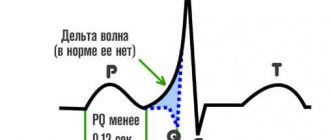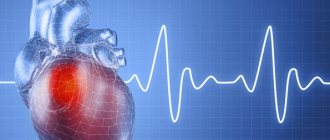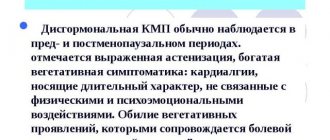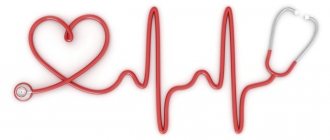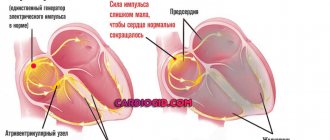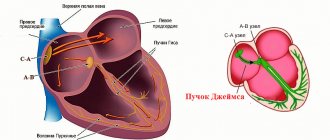A sudden attack of panic attack with a number of unpleasant consequences is usually called a vegetative-vascular crisis. The disease is widespread and has unpleasant consequences due to the lack of proper diagnosis and treatment. Therefore, the right decision would be to visit your doctor in a timely manner and follow the prescribed recommendations.
What it is?
An attack of vegetative-vascular dystonia, or vegetative-vascular crisis, is an acute course of the syndrome in which a psycho-vegetative disorder develops, which arose due to a disruption in the functioning of the entire reticular complex. Leads to a decrease in activity and performance, slowing down the speed of thinking. Another name for a vegetative crisis is a panic attack. The crisis is diagnosed in people after 20, however, the factors of its manifestation can be recorded in early childhood. Women are more susceptible to attacks due to their emotional nature.
In most cases, the crisis is asymptomatic, but the sensations of the first attack are remembered by the person for a long time. The situation is aggravated by a panic attack, with the duration of the attack reaching several hours. Those affected by a crisis remember the sensations for the rest of their lives and are afraid of repetition. Cases of daily vegetative-vascular crisis were recorded.
The causes of vascular crisis are divided into primary and secondary. The root causes are usually considered to be located at the gene level associated with pathologies of the nervous system. Secondary causes include:
- prolonged stress;
- physical stress;
- excessive mental stress;
- depletion of the heart muscle and vessel walls, which leads to organ dysfunction;
- hormonal disbalance;
- shattered psyche;
- heredity;
- problems with the functioning of internal organs;
- head injury;
- allergy;
- passive lifestyle.
Swelling of the limbs, rapid heartbeat and panic attacks are characteristic symptoms of VSD.
VSD is characterized by variable signs of manifestation, they depend on the severity of the disease, appear periodically or constantly (daily). Factors have their own frequency, which depends on the type and nature of the problem. Often, VSD phenomena are associated with signs of other diseases. It is usually difficult for a specialist to make a correct diagnosis. Symptoms of a vegetative crisis:
- panic attacks;
- then increasing and then subsiding headache pain;
- cardiopalmus;
- numbness of the limbs;
- increased sweating;
- labored breathing;
- lethargic state;
- disturbed sleep patterns;
- anxious state.
Often, a vegetative-vascular crisis is marked by pain in the heart area, radiating to the upper left part of the body (arm, shoulder blade, forearm). Signs appear and disappear during the day, this is characterized by individual differences in the body. Signals of vegetative-vascular dystonia are more pronounced during extreme heat. However, the course of the disease can pass without the presence of symptoms, which makes it difficult to provide timely assistance to a person.
Vagoinsular crisis: symptoms of the disease
Due to a sharp release of insulin into the blood, a decrease in sugar levels occurs - a hypoglycemic state. Signs of this pathology include severe weakness, sweating, feeling hot and a drop in blood pressure. Due to paroxysm, a person may lose consciousness within a few minutes from the onset of the listed symptoms. Since the vagus nerve regulates the functioning of internal organs, the following changes are noted:
- Bradycardia and hypotension.
- Dyspnea.
- Abnormal stool.
- The appearance of red dermographism.
- Heart rhythm disturbance.
Vagoinsular vegetative crisis can develop suddenly or gradually. In the first case, the patient instantly loses consciousness. Hemodynamic disorders are noted. Sometimes a crisis has a wave-like course. Symptoms gradually increase: weakness, deterioration, chills, sweating, hunger and nausea. These manifestations are replaced by a temporary improvement in well-being. Then they appear again.
Types and symptoms
There are several types of crisis depending on their duration and impact on internal organs. The frequency and duration of the crisis depends on the individual characteristics of the patient’s body. The frequency of an attack determines its severity. Accordingly, attacks differ:
- Light - lasting no more than 15 minutes, characterized by manifestations caused by one system.
- Medium - lasting up to an hour. Post-crisis asthenia is possible, lasting several days.
- Severe attacks last more than an hour and are polysymptomatic.
Many people have heard the term “paroxysms” many times. Let's try to figure out what this is. From Greek, this term is translated as “bitterness” or “irritation.”
Paroxysms - what is it?
This term is mainly used in medicine. Sharp and significant increases in any painful symptoms are called “paroxysms.” What does it mean? These manifestations often indicate the presence of any serious diseases. Sometimes paroxysms are called periodically recurring attacks of any illness: gout, swamp fever. They may indicate disturbances in the functioning of the nervous and autonomic systems. The most common cause of paroxysms is neuroses. The second place is occupied by organic brain lesions: dysfunction of the vestibular systems, hypothalamic disorders. Often crises are accompanied by seizures of temporal lobe epilepsy and migraines. They often occur against the background of allergic diseases. Cerebral autonomic paroxysm must be distinguished from manifestations of primary disorders of the endocrine glands. For example, pheochromocytomas are characterized by sympathetic-adrenal types of paroxysms. And insulinoma is characterized by vagoinsular manifestations. To properly differentiate, studies of the glycemic profile and catecholamine excretion are needed.
MedGlav.com
There are:
- sympathetic-adrenal,
- vagoinsular and
- mixed crises.
Sympathetic-adrenal paroxysms are manifested by increased blood pressure, tachycardia, hyperthermia, hyperglycemia, pain in the head and heart, chill-like hyperkinesis, fear of death and usually end with the release of large amounts of light-colored urine (“panic attacks”).
Vagoinsular paroxysms are characterized by a decrease in blood pressure, bradycardia or tachycardia, difficulty breathing, hyperhidrosis, and dizziness. One of the types of vagoinsular crisis is fainting.
In mixed paroxysms, the indicated manifestations are combined, sometimes naturally replacing each other. Crises can occur at different times of the day; in some patients they naturally appear either during the day or at night.
Paroxysms reflect the presence of dysfunction of the autonomic nervous system and can be a manifestation of a number of diseases. In the vast majority of cases, their cause is neuroses, much less often - organic (usually mild) brain lesions: hypothalamic disorders, brain stem (especially dysfunction of the vestibular systems). Sometimes crises accompany attacks of temporal lobe epilepsy and migraines. They can occur against the background of severe allergies.
Differential diagnosis.
Cerebral autonomic paroxysms should be differentiated from primary damage to the endocrine glands . Thus, pheochromocytoma is characterized by sympathetic-adrenal paroxysms, and insulinoma is characterized by vagoinsular paroxysms. Studies of catecholamine excretion and glycemic profile are also necessary. Contrast examination of the retroperitoneal region (aortography) makes it possible to differentiate these conditions.
TREATMENT.
- The most effective treatment is with psychotropic drugs, especially antidepressants. Prescribe (based on the nature of emotional anomalies) one of the following drugs: amitriptyline, melipramine, pyrazidol, azaphene, incasan; doses, gradually increasing, are adjusted to 75-100 mg/day. The effect sometimes begins to appear only in the 2-3rd week of treatment. Drowsiness associated with taking amitriptyline usually goes away as you adapt to the drug and gradually increase the adequate dose. Another component is tranquilizers. of melipramine or can be performed .
- Simultaneous use of beta-blockers ( anaprilin 40-80 mg/day) is indicated, which, along with the ability to block tachycardia, have a pronounced psychotropic effect, predominantly of a sedative nature; Antelepsin (1 tablet 3 times a day) successfully competes with the indicated therapeutic complex for “panic attacks”
General information about the treatment of paroxysms
As a rule, causal treatment is prescribed when paroxysms are observed. What are these events? Treatment is primarily aimed at normalizing emotional states and combating nervous disorders, desensitization, and reducing vestibular excitability. When using vegetative agents, you need to pay attention to the vegetative tone in the time interval between crises. When the sympathetic system is tense, sympatholytic drugs (ganglionic blockers, Aminazine, ergotamine derivatives) are used to treat paroxysms. When parasympathetic symptoms increase, anticholinergic drugs are given (medicines of the atropine group, Amizil). In cases of amphotropic shifts, combined agents are used, such as Bellaspon and Belloid. During periods of attacks, patients are given sedative and tranquilizing and symptomatic medications (Cordiamin, Caffeine, Papaverine, Dibazol, Aminazine), as well as substances that provide muscle relaxation.
Vegetative-vascular paroxysms
Paroxysms of this type can begin with headaches or heart pain, redness of the skin of the face, and palpitations. Blood pressure rises, pulse quickens, fever and chills begin. Often there are attacks of unreasonable fear. In some cases, general weakness, decreased blood pressure, nausea, sweating, and decreased heart rate are observed; Patients feel dizzy and have dark vision. As a rule, attacks last from 5-10 minutes to 3 hours. In most patients, they go away on their own - without treatment. During an exacerbation of vegetative-vascular dystonia, the feet and hands become wet, cyanotic and cold. Areas of pallor against this background give the skin an unnatural marbled appearance. The fingers become numb, tingling sensations (crawling sensations), and sometimes pain appear. The body's sensitivity to cold increases. The limbs become very pale. Often the fingers become somewhat puffy, especially with prolonged hypothermia. Against the background of overwork and anxiety, attacks become more frequent. After an attack, feelings of general weakness, malaise, and weakness may persist for several days. One of the forms that vegetative paroxysms have is fainting. A person’s vision suddenly becomes dark, and weakness sets in. The face turns pale. The patient loses consciousness and falls unconscious. However, seizures almost never occur. This condition can be recovered by inhaling ammonia through the nose.
Symptoms and signs
The attack occurs against the background of a sharp release of insulin into the blood.
As a result, the sugar level quickly, immediately decreases, and the person feels unwell. This is a dangerous crisis that requires urgent medical attention. Otherwise, death is possible.
More often, the disease appears in people with vagotonia, when there is a predominance of the tone of the parasympathetic part of the autonomic nervous system over the sympathetic one.
Symptoms of such a crisis:
- General weakness.
- It gets dark in my eyes.
- Increased sweating.
- Nausea.
- My head is spinning.
- Hell is going down.
- Feeling hot throughout the body, high temperature.
- The pulse slows down.
- Red spots on the skin.
The attack may come suddenly or grow in waves. In the first case, it is accompanied by nausea or sudden fainting. In the second, you feel very tired, the urge to vomit regularly occurs, and there is a problem with bowel movements—profuse.
As these symptoms pass, your health does not improve for a long time.
During an attack, the following important systems are severely affected:
- Cardiovascular;
- Respiratory;
- Gastrointestinal tract.
Against the background of overwork, anxiety, and stress, attacks become more frequent. For several days after the crisis, the patient feels overwhelmed, there is general malaise, weakness throughout the body.
In childhood, vagoinsular crisis is also possible. Symptoms include severe headaches and migraines. An attack in childhood from 10 to 12 years of age is possible against the background of severe fright or as a result of emotional shock.
Sometimes a crisis manifests itself as an acute allergic reaction for unknown reasons, and Quincke's edema suddenly forms.
With such an attack, the level of serotonin, histamine, and acetylcholine increases. These substances are active participants in the formation of allergic reactions.
Paroxysm of tachycardia
Paroxysmal tachycardia is a sharply beginning and just as suddenly ending increase in heart rate. The cause of the attack is considered to be extrasystoles that occur in long series, as well as active heterotopic rhythms with high frequency, arising due to the high excitability of the lower centers. The duration of individual seizures ranges from 5-10 minutes to several months. As a rule, attacks are repeated at certain intervals.
Consequences
The consequences of a failure of the autonomic nervous system do not go unnoticed.
After an attack, the following occur:
- After a certain period of time, a crisis can arise again.
- Quick and timely assistance from doctors and monitoring of the patient’s body cannot give a 100% treatment result.
- If a person has already experienced such a crisis, then he experiences a syndrome of “anticipation anxiety.” Over time, this leads to new attacks.
- After experiencing an attack, a person, even having already recovered, provokes repeated symptoms, constantly afraid of experiencing them again.
- After experiencing a crisis, a person changes his lifestyle, he tries to protect himself from potential places of danger. They are afraid of going to unfamiliar places or being in places where there are too many people. Possible development of agoraphobia.
Vagoinsular crisis is not a death sentence; such a disease is not fatal, unless, of course, medical assistance is provided on time, without delay. But it is impossible to completely stop the development and progression of such dystonia - this is what doctors think.
To prevent the development of the disorder, you should reduce stress and not panic.
Try to be calm in any situation and lead a measured lifestyle. Give up bad habits.
It is important to learn to control the nervous system. This way you can avoid vagoinsular and other crises.
Affective-respiratory paroxysms
Affective-respiratory paroxysms are attacks with breath holding. They are considered early manifestations of hysterical fits and fainting. Typically occurs in young children. These paroxysms begin to be observed towards the end of the first year of life and usually continue until the age of three. These are a kind of reflexes. When a child cries and suddenly forcefully exhales all the air from himself, and then falls silent. The mouth remains open at this moment. Such attacks usually last no more than a minute.
Vegetovascular paroxysms are clinical manifestations of dysfunction of the autonomic nervous system (ANS). They are expressed by a sharp deterioration in the patient’s condition with progression of leading symptoms. Many people ignorant of medicine believe that the types of paroxysms cannot be distinguished without the use of specialized and highly accurate diagnostic methods. But this is not so, and in most cases an experienced doctor immediately sees what he is dealing with.
Difference from sympathoadrenal crisis
Acute disorders of the autonomic nervous system include sympathoadrenal and vagoinsular crisis. These pathological conditions differ from each other in the mechanism of development and clinical signs. In both cases, urgent medical attention is required, since each of these conditions can lead to death. Sympathoadrenal crisis is characterized by a sharp increase in the level of hormones of the adrenal cortex. They cause stimulation of the central and autonomic nervous system. The release of adrenaline is accompanied by tachycardia, increased blood pressure and a feeling of anxiety and fear. Another name for this pathology is a panic attack.
In contrast to sympathoadrenal crisis, when insulin levels in the blood increase, the opposite symptoms are observed. The parasympathetic nervous system begins to dominate over the sympathetic department. There is a slowdown in the heart, relaxation of blood vessels, narrowing of the bronchi, etc.
Definition of paroxysms
Vegetative-vascular paroxysms are a collective concept that includes all the sudden changes in the functioning of the ANS. They manifest themselves as a complex of symptoms.
The main features of such attacks:
- Suddenness. Pathology occurs without warning and quickly increases after the influence of a provoking factor.
- Emotional dependence. Most paroxysms progress after strong experiences (both positive and negative).
- Functional character. Seizures are manifestations of a disorder in the functioning of the ANS and its structures. When their functions are normalized, the problem goes away.
A synonym for vegetative-vascular paroxysm is crisis. There are several options for the development of the clinical picture against the background of different manifestations of specific pathological reactions. In each case, the characteristics of the symptoms are noted, on the basis of which they are differentiated.
- Paroxysms are characteristic mainly of young patients. In older people, they occur much less frequently due to sclerotic changes in the body and a decrease in the overall ability to quickly mobilize. The vessels lose their elasticity and cannot expand or contract quickly enough to cause a crisis.
- Women get sick more often than men. This is noticeable during menstruation and pregnancy - a hormonal imbalance occurs, which further aggravates the malfunction of the ANS.
Mechanism of occurrence
Functional abnormalities in the functioning of the hypothalamus and peripheral parts are secondary in nature and disappear after the provoking factor is eliminated.
Sometimes the cause of crises is organic damage to the structures of the ANS (tumor, infection, injury), which aggravates the course of the disease. In this case, the diagnosis of VSD is not made, since crises are caused not by an imbalance, but by organic pathology, and are no longer the main condition, but a secondary manifestation.
Depending on which department of the ANS (sympathetic or parasympathetic) predominates, the functioning of specific organs is enhanced or weakened. Traditionally, the following are affected by paroxysms:
- heart;
- vessels;
- nervous system;
- endocrine glands.
During a sharp activation of the ANS, a sudden manifestation of the main manifestations of the disease occurs. For some, this will result in a hypertensive crisis, while others fall into depression.
Types of paroxysms
Depending on the symptoms, they are divided into the following types:
- sympathoadrenal;
- vagoinsular;
- mixed.
The first group includes sudden deterioration of the condition, which is caused by activation of the sympathetic division of the autonomic nervous system.
- People with such paroxysm are anxious, irritable, and sometimes even aggressive.
- Their blood pressure rises, headaches appear, their skin turns pale, and their pupils dilate.
Sedatives have worked well in treatment.
Vagoinsular vegetative-vascular crisis progresses against the background of hyperactivation of the parasympathetic part of the nervous system. Because of this, inhibition of most internal reactions is observed:
- the person is gloomy;
- his blood pressure drops;
- there is sweating, the urge to have a bowel movement, nausea and vomiting;
- pupils constrict;
- heartbeat becomes rare.
The mixed type combines the features of the two options above. It indicates a pronounced imbalance in the functioning of the ANS with constant activation of one or another of its departments.
They are classified according to severity as follows:
- Lungs. They last 10–20 minutes and go away on their own without the use of medications.
- Average. Lasts up to one hour. They manifest themselves as severe symptoms with a noticeable decrease in performance.
- Heavy. The patient is disturbed for more than 60 minutes. Accompanied by pronounced signs of autonomic dysfunction with a strong deterioration in well-being. Elimination requires the use of specialized medications.
Vegetative paroxysms
Autonomic paroxysms (crises) are special neurological conditions characterized by paroxysmal occurrence of emotional, cognitive, and behavioral disorders.
As a rule, the disease develops against the background of exacerbation of chronic pathologies of internal organs.
Paroxysmal conditions are more often observed in patients 20-40 years old; they appear abruptly and disappear just as quickly, but they tend to recur and require mandatory consultation with a neurologist.
Autonomic paroxysms: issues of pathogenesis, diagnosis and treatment
Odinak M.M., Mikhailenko A.A., Shustov E.B., Ivanov Yu.S., Semin G.F., Kotelnikov S.A., Kovalenko A.P.
The article outlines the etiology and pathogenesis of vegetative paroxysms based on a thorough analysis of published research by both Russian and foreign authors, as well as our own experimental and clinical observations.
During the experimental and clinical studies, modern methods were used to evaluate different parts of the pathogenesis of vegetative paroxysms from the standpoint of systemic analysis, as well as to suggest ways of differential diagnosis of various forms of the disease.
The use of some new drugs and directions of therapy for vegetative paroxysms, as well as various treatment regimens for patients with different forms of this pathology, are justified. In the structure of somatic and neurological pathology, autonomic disorders reach 25-80% [14].
The most common forms include vegetative paroxysms (VP), which are usually diagnosed in people aged 20-40 years [11,14], who make up the majority of the Armed Forces personnel.
The likelihood of developing the disease increases in local conflicts, emergency situations or after recovery from them, when military personnel are constantly or for a long time under stress. Autonomic paroxysms are also a common manifestation of the consequences of closed brain injury [33,34]. According to I.M.
Chizh (1996) in the Chechen armed conflict noted a high proportion of injuries to the head, neck and spine (22.7%), which is 1.9 times higher than during the Great Patriotic War [32]. Undoubtedly, some of this category of military personnel will develop autonomic disorders over time. All this predetermines the need for both an in-depth study of the mechanisms of development of vegetative paroxysms, and systematization of criteria for their diagnosis, determination of the main directions of differentiated therapy and prevention of vegetative paroxysms.
In accordance with the Guide to Diseases of the Autonomic Nervous System (1991), autonomic paroxysms are defined as paroxysmal manifestations of emotional, autonomic, cognitive and behavioral disorders in a relatively short period of time [14].
The main role in the pathogenesis of autonomic paroxysms is played by disruption of autonomic regulation and the development of autonomic imbalance. According to the most common concept of H.
Selbach, the relationship between the sympathetic and parasympathetic nervous systems corresponds to the principle of “swinging equilibrium”: an increase in the tone of one system entails an increase in the tone of the other [14]. This form of vegetative support allows you to maintain homeostasis and create conditions for increased lability of physiological functions.
Clinical experimental studies have discovered this lability in almost all systems - variations in heart rate, blood pressure (BP), body temperature and other indicators. When these fluctuations go beyond the homeostatic range, the autonomic regulation system is more vulnerable to damaging factors.
Under such conditions, exogenous or endogenous stimuli can lead to extreme tension in regulatory systems, and then to their breakdown or (according to A.M. Vein) “disintegration” [6] with clinical manifestation, including in the form of vegetative paroxysms. The key element in the “disintegration” of regulatory systems is the imbalance of autonomic regulation.
It can occur, for example, when any suprasegmental structures of the autonomic nervous system (ANS) are involved in the “stagnant circulation” of excitation.
Chronic diseases of internal organs and the nervous system, foci of infection, complicated osteochondrosis of the spine can cause a significant increase in afferent flow and the formation of ensembles of autonomic neurons with increased excitability [4,21,28].
Closed brain injuries, neuroinfections and neurointoxications, chronic disorders of cerebral circulation and liquor dynamics can lead to changes in brain chemistry and bioelectrical activity of neurons according to the “post-tetanic potentiation” type, which leads to the formation of foci of stagnant circulation of excitation in the limbic-reticular structures.
Another mechanism of “disintegration” may be a change in the sensitivity of hypothalamic neurons and the reticular formation of the midbrain to mediators (norepinephrine, serotonin, neuropeptides) [31]. Such dynamics were revealed after emotional stress, during chronic pain exposure, and hypokinesia [19,31,45]. The action of various predisposing factors of a hereditary-constitutional nature, birth injuries, hormonal dysfunctions can manifest itself in disruption of the synthesis, release and inactivation of mediators, “breakdown” of the mechanisms of auto- and heteroregulation of synapses. As a result of the action of these factors, a mosaic picture of the sensitivity and reactivity of neurons is created in the brain structures [3,31], autonomic imbalance develops, and adequate autonomic support of life is disrupted.
It has been established that in response to psychoemotional and physical stress, under the influence of impulses coming from the limbic system, norepinephrine and other neurotransmitters are released in the hypothalamus [30,31,40,44,45].
This is accompanied by activation of the sympathoadrenal system and changes in the functioning of internal organs (heart, lungs, gastrointestinal tract) [39,41,42,46].
The pathological factors described above create a predisposition in the limbic system, hypothalamus, and reticular formation to high sensitivity and reactivity of neurons to the action of neurotransmitters.
Therefore, even subthreshold stressful stimuli can cause in such people excessive activation of autonomic neurons of the hypothalamus and emotiogenic structures of the limbic system, which can manifest as autonomic paroxysms.
In addition, such individuals showed a decrease in the blood concentration of serotonin, which is a functional antagonist of norepinephrine and prevents the development of these reactions, and -endorphins, which have a stress-protective effect [10,31]. As a result, a focus of excitation and stagnant circulation of impulses in these brain structures is constantly maintained and any stressful stimulus, even of slight strength, causes their activation and the development of autonomic paroxysm of a sympathetic, parasympathetic or mixed nature (depending on which nuclei of the hypothalamus and midbrain are involved into excitement).
With chronic stress, due to the irradiation of excitation, new nerve centers can be involved and the content of neurotransmitters can be depleted [31,45], which entails a change in the clinical picture and the type of vegetative paroxysms. Prolonged autonomic imbalance can not only aggravate the course of existing visceral dysfunctions, but also contribute to the formation of new somatoneurological syndromes.
Among the 97 individuals we examined with various types of vegetative pathology, 37 patients were diagnosed with vegetative paroxysms: 12 – parasympathetic, 10 – sympathetic and 15 – mixed. The average age of the patients was 35 years, the average duration of the disease was 5.8 years.
All patients underwent autonomic tone studies according to the methods of the All-Russian Center for Autonomic Pathology [14], as well as variation pulsometry [2,9], rheoencephalography (REG) [15], active orthostatic test (OP), and evoked cutaneous autonomic potentials (ESEP) were recorded [ 5.26], measuring the temperature of the limbs and core of the body.
The control group consisted of 30 practically healthy men aged 18–25 years.
Almost all patients had premorbid pathology before the development of vegetative paroxysms: 17 people (46%) had chronic diseases of internal organs, 14 (38%) had mild closed brain injuries, 15 (41%) had osteochondrosis of the cervical spine ( in 73% of cases – with clinical manifestations).
Vegetative-vascular instability in childhood was present in 12 (32%), severe infectious diseases (pneumonia, meningitis, hepatitis, tuberculosis and others) in the anamnesis – in 7 people (19%). A combination of two factors was present in 12 (32%). three - in 3 people (12%). At the time of examination, 23 patients with CAP (62%) had chronic diseases.
The impact of acute or chronic stress was observed in 62% of patients.
In patients with vegetative paroxysms, manifested by crises of a predominantly sympathoadrenal nature, the clinical picture of the disease was characterized by tachycardia, increased blood pressure and body temperature, chills, and unpleasant sensations in the heart area. Most patients had polyuria at the end of the attack.
Vagoinsular paroxysms clinically occurred with a feeling of suffocation, dizziness, nausea, sometimes accompanied by vomiting, bradycardia, increased intestinal motility, a feeling of heat, and hyperhidrosis.
With mixed autonomic paroxysms, individual signs of both types were noted (dizziness, nausea, increased blood pressure, palpitations).
They also showed a higher incidence of chronic diseases of internal organs (87%) compared to other groups, and of these, 77% of patients suffered from diseases of the gastrointestinal tract (mainly chronic cholecystitis and gastroduodenitis); 53% (8 out of 15 people) had two or more chronic diseases.
Based on the pathogenesis, clinical picture and neurofunctional diagnostic data, the basic principles of therapy for autonomic paroxysms should include:
- Correction of the patient’s psycho-emotional state, including the use of stress protectors;
- Elimination of foci of pathological afferent impulses;
- Treatment and prevention of chronic diseases of internal organs;
- Treatment of neurological manifestations of spinal osteochondrosis;
- Elimination of foci of stagnant excitation and circulation of impulses in the limbic system;
- Restoration of disturbed vegetative balance;
- A differentiated approach to prescribing medications, depending on the type and severity of vegetative paroxysms;
- Elimination of excess tension in the functioning of internal organs;
- Creating favorable metabolic conditions for the brain during therapy;
Prevention of vegetative paroxysms
Stress protectors are an effective means of preventing vegetative paroxysms.
For this purpose, daytime tranquilizers can be widely used to correct the psycho-emotional state of the patient, drugs of different groups are used - benzodiazepine tranquilizers, antidepressants, some neuroleptics and anticonvulsants. They also have a beneficial effect on areas of increased excitability and “stagnant” circulation of nerve impulses.
Antidepressants, to varying degrees, block the reuptake of norepinephrine (NA) and serotonin and have anxiolytic, thymoanaleptic and sedative effects [1,23,25,35].
To correct the psycho-emotional state, it is also necessary to use psychotherapy, including one aimed at changing personal attitudes towards traumatic factors.
Clinical neurophysiological diagnosis of autonomic paroxysms helps to establish the redundancy or insufficiency of the functioning of ergotropic (sympathetic) centers. PYRROXANE has an effect on the ergotropic system. PIRROXANE – has a central and peripheral adrenergic blocking effect [8,23,24].
Penetrates the blood-brain barrier in the diencephalic zone and suppresses the effects associated with excessive excitation of the posterior hypothalamus [18].
It reduces overall sympathetic tone, has a mild sedative and anti-anxiety effect, and normalizes thermoregulation and catecholamine metabolism [8,24]. Prescribed for autonomic paroxysm of a sympathoadrenal nature in the initial stage of the disease (up to 5 years).
According to our observations, with its use in such patients, there is an improvement in well-being, normalization of CVEP and hemodynamics, and a decrease in the frequency of exacerbations.
Thus, the occurrence of vegetative paroxysms is associated with multifactorial influences, each of which predetermines the need for differential use of certain pharmacological agents.
Clinical diagnosis and differentiation of vegetative paroxysms should be sufficiently confirmed by typical changes in CVEP, REG, and orthostatic test indicators.
The treatment course should be at least 1-2 months and correspond to the severity and form of vegetative paroxysm.
Nocturnal paroxysms
Nocturnal paroxysmal dystonia is a separate type of vegetative attacks that does not fit into the traditional classification. Unlike other forms of pathology, the causes of its origin are still unknown.
The problem manifests itself as episodes of chaotic motor activity involving the limbs and the whole body after waking up.
Clinically, nocturnal paroxysm of dystonia resembles an epileptic seizure, but with normal electroencephalography (EEG) readings. It is believed that the reason for the appearance of such movements is the loss of inhibitory mechanisms in the brain stem.
Normally, they interfere with human muscle activity during sleep. The pathology is manifested by characteristic seizures. The average episode length is 10–60 minutes. Treatment has not yet been developed.
The clinical picture of paroxysms caused by dysfunction of the ANS varies depending on the predominance of its specific part.
Typical symptoms of sympathoadrenal crisis:
Patients with sympathoadrenal paroxysm suddenly turn purple, and convulsions may even occur. They tend to express emotions too strongly (screaming, crying).
The vagoinsular variant is characterized by a predominance in the regulation of the peripheral organs of the parasympathetic division of the ANS. Classic symptoms of such paroxysm:
- Deterioration of mood. The person is apathetic, whiny, and does not want to communicate with other people.
- Bradycardia. Functional arrhythmias progress.
- Breathing problems. Shortness of breath, lack of air, and compression of the lungs appear. Some people note the presence of a non-existent obstruction in the bronchi that prevents them from breathing normally.
- Blood pressure drop. In severe forms of paroxysm, a person may even faint. The main danger remains the risk of injury from a fall or progression of symptoms while performing work or driving.
- Discomfort throughout the body. A person is often unable to determine where it hurts. The unpleasant sensation is aching in nature, occurs frequently, and is mildly expressed.
The mixed form of paroxysm is manifested by a combination of the above symptoms with varying degrees of severity.
Vegetovascular paroxysms
Vegetovascular paroxysms are clinical manifestations of dysfunction of the autonomic nervous system (ANS).
They are expressed by a sharp deterioration in the patient’s condition with progression of leading symptoms. Many people ignorant of medicine believe that the types of paroxysms cannot be distinguished without the use of specialized and highly accurate diagnostic methods.
But this is not so, and in most cases an experienced doctor immediately sees what he is dealing with.
Vegetative-vascular paroxysms are a collective concept that includes all the sudden changes in the functioning of the ANS. They manifest themselves as a complex of symptoms.
The main features of such attacks:
- Suddenness. Pathology occurs without warning and quickly increases after the influence of a provoking factor.
- Emotional dependence. Most paroxysms progress after strong experiences (both positive and negative).
- Functional character. Seizures are manifestations of a disorder in the functioning of the ANS and its structures. When their functions are normalized, the problem goes away.
A synonym for vegetative-vascular paroxysm is crisis. There are several options for the development of the clinical picture against the background of different manifestations of specific pathological reactions. In each case, the characteristics of the symptoms are noted, on the basis of which they are differentiated.
- Paroxysms are characteristic mainly of young patients. In older people, they occur much less frequently due to sclerotic changes in the body and a decrease in the overall ability to quickly mobilize. The vessels lose their elasticity and cannot expand or contract quickly enough to cause a crisis.
- Women get sick more often than men. This is noticeable during menstruation and pregnancy - a hormonal imbalance occurs, which further aggravates the malfunction of the ANS.
Mechanism of occurrence
Functional abnormalities in the functioning of the hypothalamus and peripheral parts are secondary in nature and disappear after the provoking factor is eliminated.
Sometimes the cause of crises is organic damage to the structures of the ANS (tumor, infection, injury), which aggravates the course of the disease. In this case, the diagnosis of VSD is not made, since crises are caused not by an imbalance, but by organic pathology, and are no longer the main condition, but a secondary manifestation.
Depending on which department of the ANS (sympathetic or parasympathetic) predominates, the functioning of specific organs is enhanced or weakened. Traditionally, the following are affected by paroxysms:
- heart;
- vessels;
- nervous system;
- endocrine glands.
During a sharp activation of the ANS, a sudden manifestation of the main manifestations of the disease occurs. For some, this will result in a hypertensive crisis, while others fall into depression.
Types of paroxysms
Depending on the symptoms, they are divided into the following types:
- sympathoadrenal;
- vagoinsular;
- mixed.
The first group includes sudden deterioration of the condition, which is caused by activation of the sympathetic division of the autonomic nervous system.
- People with such paroxysm are anxious, irritable, and sometimes even aggressive.
- Their blood pressure rises, headaches appear, their skin turns pale, and their pupils dilate.
Sedatives have worked well in treatment.
Vagoinsular vegetative-vascular crisis progresses against the background of hyperactivation of the parasympathetic part of the nervous system. Because of this, inhibition of most internal reactions is observed:
- the person is gloomy;
- his blood pressure drops;
- there is sweating, the urge to have a bowel movement, nausea and vomiting;
- pupils constrict;
- heartbeat becomes rare.
The mixed type combines the features of the two options above. It indicates a pronounced imbalance in the functioning of the ANS with constant activation of one or another of its departments.
They are classified according to severity as follows:
- Lungs. They last 10–20 minutes and go away on their own without the use of medications.
- Average. Lasts up to one hour. They manifest themselves as severe symptoms with a noticeable decrease in performance.
- Heavy. The patient is disturbed for more than 60 minutes. Accompanied by pronounced signs of autonomic dysfunction with a strong deterioration in well-being. Elimination requires the use of specialized medications.
Nocturnal paroxysms
Nocturnal paroxysmal dystonia is a separate type of vegetative attacks that does not fit into the traditional classification. Unlike other forms of pathology, the causes of its origin are still unknown.
The problem manifests itself as episodes of chaotic motor activity involving the limbs and the whole body after waking up.
Clinically, nocturnal paroxysm of dystonia resembles an epileptic seizure, but with normal electroencephalography (EEG) readings. It is believed that the reason for the appearance of such movements is the loss of inhibitory mechanisms in the brain stem.
Normally, they interfere with human muscle activity during sleep. The pathology is manifested by characteristic seizures. The average episode length is 10–60 minutes. Treatment has not yet been developed.
Symptoms
The clinical picture of paroxysms caused by dysfunction of the ANS varies depending on the predominance of its specific part.
Typical symptoms of sympathoadrenal crisis:
- Marked emotional lability. People are mostly anxious, overly irritable, and sometimes aggressive.
- Acceleration of heart rate. The patient feels a beating in the chest, which is constantly intensifying.
- Increase in blood pressure. Constriction of peripheral vessels in combination with increased myocardial contractions lead to increased readings on the tonometer.
- Pain in the heart area. Stitching, pressing, burning sensations are noted.
- Headache. Mostly sudden, but short-lived. It has a pulsating and pressing character. Localized in the frontal, temporal, occipital regions of the skull.
Patients with sympathoadrenal paroxysm suddenly turn purple, and convulsions may even occur. They tend to express emotions too strongly (screaming, crying).
The vagoinsular variant is characterized by a predominance in the regulation of the peripheral organs of the parasympathetic division of the ANS. Classic symptoms of such paroxysm:
- Deterioration of mood. The person is apathetic, whiny, and does not want to communicate with other people.
- Bradycardia. Functional arrhythmias progress.
- Breathing problems. Shortness of breath, lack of air, and compression of the lungs appear. Some people note the presence of a non-existent obstruction in the bronchi that prevents them from breathing normally.
- Blood pressure drop. In severe forms of paroxysm, a person may even faint. The main danger remains the risk of injury from a fall or progression of symptoms while performing work or driving.
- Discomfort throughout the body. A person is often unable to determine where it hurts. The unpleasant sensation is aching in nature, occurs frequently, and is mildly expressed.
The mixed form of paroxysm is manifested by a combination of the above symptoms with varying degrees of severity.
Features of the flow
Treatment of vegetative paroxysms is complex. It is carried out using both specialized drugs (mainly affecting the functioning of the ANS) and non-drug methods:
- acupuncture;
- aromatherapy;
- physiotherapy;
- meditation.
By fixing the factor that provokes the appearance of the next paroxysm, with its further elimination, it is possible to normalize the person’s condition.
It is possible to completely eliminate the occurrence of attacks by normalizing the balance between the branches of the autonomic system and increasing the threshold of excitability of the nervous system.
Source: //distonija.ru/simptomy/vegetososudistye-paroksizmy
Features of the flow
Treatment of vegetative paroxysms is complex. It is carried out using both specialized drugs (mainly affecting the functioning of the ANS) and non-drug methods:
- acupuncture;
- aromatherapy;
- physiotherapy;
- meditation.
By fixing the factor that provokes the appearance of the next paroxysm, with its further elimination, it is possible to normalize the person’s condition.
It is possible to completely eliminate the occurrence of attacks by normalizing the balance between the branches of the autonomic system and increasing the threshold of excitability of the nervous system.
Vegetative-vascular dystonia (VSD), or neurocirculatory dysfunction, is a pathological condition of the autonomic nervous system, which results in insufficient oxygen supply to organs and tissues. Patients often present many different complaints. But upon a comprehensive examination of the patient, no changes in the organs are detected, since symptoms arise from deviations in the structure and functions of the autonomic nervous system.
Next, we will explain in simple terms what VSD is, what causes it, what symptoms people most often encounter, and how to treat this disease.
The concept of vagoinsular crisis
As you know, the autonomic nervous system controls the functioning of almost all internal organs. Under the influence of strong irritants, its functioning is disrupted. As a result, disruptions occur in the body. They are mainly associated with stress. Vagoinsular crises are characterized by a sharp release of pancreatic hormone into the blood. This leads to changes in the functioning of the vagus nerve, which is responsible for the functioning of vital systems. The main symptoms of vagoinsular crisis are: general weakness, decreased blood pressure, red dermographism. This condition is often observed in people suffering from vegetative-vascular dystonia.
The crisis is characterized by the sudden appearance of signs of cardiac and respiratory failure. Pathological changes in the functioning of the gastrointestinal tract may be observed. An acute attack (paroxysm) is diagnosed in both adults and children. More often, vegetative-vascular dystonia is detected in adolescence and young adulthood.
What is vegetative-vascular dystonia (VSD)?
Vegetative-vascular dystonia ( VSD
) is a disease of the autonomic nervous system. The autonomic nervous system (ANS) regulates the functioning of blood vessels and internal organs. It is divided into the sympathetic and parasympathetic systems. The action of the ANS systems is opposite: for example, the sympathetic system speeds up heart contractions, and the parasympathetic system slows it down.
And these functions are very diverse and vitally important. This:
- Maintain normal body temperature and blood pressure
- Processes of cardiovascular activity
- Digestion and urination
- Activities of the endocrine and immune systems
With VSD, the balance between the parasympathetic and sympathetic systems is disrupted, which causes symptoms that worsen overall health. Symptoms of VSD do not pose a threat to human life, but sometimes they can signal the presence of serious problems in the vascular, nervous, cardiac or other vital systems.
The pathology is usually detected in childhood or young age, the peak of symptoms occurs at the age of 20-40 - the most productive and active period, while the usual rhythm of life is disrupted, professional activity becomes difficult, and family relationships suffer.
In modern medicine, vegetative vascular dystonia is not considered as an independent disease, since it is a set of symptoms that develop against the background of the course of some organic pathology. Vegetative-vascular dystonia is often referred to as autonomic dysfunction, angioneurosis, psycho-vegetative neurosis, vasomotor dystonia, autonomic dystonia syndrome, etc.
The main signs of VSD are:
- Pain in the heart (cardialgia);
- Arrhythmias;
- Respiratory disorders;
- Autonomic disorders;
- Fluctuations in vascular tone;
- Neurosis-like conditions.
Thus, vegetative-vascular dystonia is not an independent disease, but a complex syndrome that is part of the total clinical picture of various psycho-emotional, somatic, neurological or mental diseases.
The pathology can appear in early childhood or adolescence, but, as a rule, it does not cause much concern. According to statistics, the peak occurs in the age period from 20 to 40 years. It has been proven that the female population is more susceptible to the disease than the male population.
It is diagnosed in 60–70 percent of cases in adults and in 10–15 percent in children and adolescents.
The causes of vegetative-vascular dystonia are very different and, sometimes, lie in early childhood or even the period of intrauterine development. Among them, the most important are:
- Intrauterine hypoxia, abnormal birth, childhood infections;
- Stress, neuroses, severe physical overload;
- Traumatic brain injuries and neuroinfections;
- Hormonal changes during pregnancy and adolescence;
- Heredity and constitutional features;
- The presence of chronic pathology of internal organs.
Behavioral factors and lifestyle can contribute to vegetative dystonia:
- Excessive addiction to alcohol and coffee
- Great mental or physical stress
- The type of temperament and character traits also plays a role: The most balanced sanguine people by type are least susceptible to VSD
- On the contrary, choleric and melancholic people are at risk
Mentally balanced, cheerful people suffer from autonomic disorders much less often than anxious, irritable and suspicious people
People suffering from VSD are sensitive to life changes. For them, the test becomes a change in climate, moving a long distance, to a different time zone - unpleasant symptoms begin to appear.
Causes of vagoinsular crisis
The immediate factor provoking a crisis is an increase in the tone of the vagus nerve - vagotonia. The reasons for the activation of the parasympathetic nervous system can be:
- traumatic brain injuries, including birth injuries;
- lack of oxygen during intrauterine development;
- stressful conditions, experiences;
- infectious diseases;
- low physical activity;
- diabetes mellitus, usually type 2;
- obesity;
- age-related hormonal changes - puberty, menopause;
- mental stress;
- diseases of the digestive system;
- climate change.
We recommend reading the article about neurocirculatory dystonia. From it you will learn about the causes of the pathology, its types and symptoms, diagnostics and treatment methods, and preventive measures.
And here is more information about arterial hypotension.
Symptoms of vegetative-vascular dystonia in adults
The manifestations of vegetative-vascular dystonia are diverse, which is due to the multifaceted influence on the body of the VNS, which regulates the basic autonomic functions - breathing, blood supply, sweating, urination, digestion, etc. Symptoms of autonomic dysfunction can be expressed constantly or manifested by attacks, crises (panic attacks, fainting, other paroxysmal conditions).
All symptoms characteristic of VSD can be combined into the following large groups:
- Weakness, fatigue, lethargy, especially severe in the morning;
- Unpleasant sensations or pain in the heart area;
- A feeling of lack of air and associated deep breaths;
- Anxiety, sleep disturbances, restlessness, irritability, concentration on one’s illness;
- Headaches and dizziness;
- Excessive sweating;
- Instability of pressure and vascular tone.
All of the above symptoms are largely due to vascular tone. Therefore, depending on which vascular tone predominates in a given person, the following types of VSD are distinguished:
- Hypertensive;
- Hypotensive;
- Mixed;
- Cardialgic.
- Headache,
- migraine attacks of unknown etiology,
- tachycardia
- Sweating (in the elbows, feet and palms),
- cold extremities,
- dizziness,
- muscle weakness,
- change in skin color (pale tint and blueness in certain areas)
- Lack of air,
- dyspnea,
- headache
- hypertensive
- hypotonic type
A person who has vegetative-vascular dystonia often suffers from:
- sleep disorders
- headache
- weather dependence
- increased fatigue
- depressed mood
- obsessive states and all kinds of neuroses
- He may have frequent fainting, hand tremors, irregular heart rhythms, panic attacks, phobias of various diseases, etc.
Symptoms of an attack of VSD
Like other pathologies, vegetative-vascular dystonia can worsen after emotional disturbances or acute oxygen starvation. An acute attack is not life-threatening for the patient, but it can cause disturbances in the functioning of blood vessels, as well as mental disorders and internal pathologies.
To prevent this from happening, it is necessary to know the symptoms that manifest an exacerbation of neurocirculatory dysfunction. These include:
- a sharp deterioration in health;
- muscle weakness, feeling of “woolly” legs;
- pressure change;
- chest pain;
- heart rhythm disturbance;
- pain in the epigastric zone;
- heat;
- nausea.
Symptoms
The clinical picture of paroxysms caused by dysfunction of the ANS varies depending on the predominance of its specific part.
Typical symptoms of sympathoadrenal crisis:
Patients with sympathoadrenal paroxysm suddenly turn purple, and convulsions may even occur. They tend to express emotions too strongly (screaming, crying).
The vagoinsular variant is characterized by a predominance in the regulation of the peripheral organs of the parasympathetic division of the ANS. Classic symptoms of such paroxysm:
- Deterioration of mood. The person is apathetic, whiny, and does not want to communicate with other people.
- Bradycardia. Functional arrhythmias progress.
- Breathing problems. Shortness of breath, lack of air, and compression of the lungs appear. Some people note the presence of a non-existent obstruction in the bronchi that prevents them from breathing normally.
- Blood pressure drop. In severe forms of paroxysm, a person may even faint. The main danger remains the risk of injury from a fall or progression of symptoms while performing work or driving.
- Discomfort throughout the body. A person is often unable to determine where it hurts. The unpleasant sensation is aching in nature, occurs frequently, and is mildly expressed.
The mixed form of paroxysm is manifested by a combination of the above symptoms with varying degrees of severity.
Complications
The course of vegetative-vascular dystonia can be complicated by autonomic crises, which occur in more than half of patients. Depending on the predominance of disorders in one or another part of the autonomic system, sympathoadrenal, vagoinsular and mixed crises are distinguished.
If we talk about neurological and cardiac disorders that can provoke the disease, they manifest themselves in the following:
- decreased efficiency of the heart muscle, interruptions in its activity;
- development of hypertension or hypotension - high and low blood pressure;
- disturbances in the functioning of the urinary system, increased urge to go to the toilet;
- changes in the autonomic regulation of the eyes, which leads to deterioration of vision;
- failure in the metabolic process, loss of body weight;
- development of weather dependence - an acute reaction of the body to changes in weather conditions;
- improper functioning of the vascular system, leading to poor nutrition of brain tissue;
- gastrointestinal dysfunction - constipation, diarrhea, bloating, etc.
The consequences of VSD are essentially its aggravated symptoms, which occur already in the early stages of the development of the syndrome, but do not cause much concern to patients.
Risk factors for crisis development
Despite the fact that almost all people are exposed to nervous and physical stress, vagoinsular crises develop only in a certain part of the population. This is due to a hereditary predisposition to this condition, which is of great importance. More often, vegetative-vascular dystonia is diagnosed in young women.
Risk factors include characteristics of the human psyche, nutrition, the presence of bad habits, concomitant pathological conditions, lifestyle, etc. Crises can occur in the following cases:
- In the presence of constant nervous tension. For example, due to heavy mental work.
- If a person keeps emotions to himself for a long time, that is, he is an introvert.
- In people prone to obesity. Hypercholesterolemia is a risk factor for vagotonia.
- With caffeine abuse.
- In cases where an anxious or hypochondriacal personality type is formed.
Vagoinsular crisis refers to acute conditions in which it is necessary to provide emergency care to the patient. Every doctor should know what therapeutic measures to take to stop an attack.
Diagnostics
Patients with vegetative-vascular dystonia are usually treated by a neurologist. Additionally, consultations with a cardiologist, gastroenterologist, and endocrinologist are prescribed. The treatment involves a physiotherapist, a specialist in physical therapy and massage, and a reflexologist.
Exacerbation of VSD occurs in spring and autumn. Early spring is considered a dangerous period for dystonics. The deterioration of the condition is sometimes so serious that you have to see a doctor and take a sick leave.
The complaints of people suffering from vegetative-vascular dystonia are as follows:
- from the vascular system - pressure surges, headaches, heart pain, tachycardia, increased sweating, weakness;
- decreased immunity caused by seasonal hypovitaminosis after winter, depletion of defenses, frequent colds, causing a crisis of VSD
.
To correctly diagnose VSD, it is necessary to exclude somatic (organic) diseases that give similar symptoms.
- For example, to exclude thyroid disease (hypothyroidism and hyperthyroidism), an ultrasound scan of the thyroid gland is performed and blood is donated to test its hormonal activity.
- Sometimes you need to do an ECG (electrocardiogram), MRI (magnetic resonance imaging), vascular Dopplerography (ultrasound of brain vessels), visit an ophthalmologist and endocrinologist.
- And only after somatic diseases have been excluded and the diagnosis of VSD has been fully confirmed, the doctor can prescribe individual treatment.
Reasons for the development of the pathological condition
There are many reasons why a vagoinsular crisis may develop. Among them are both endo- and exogenous influences. Most often, the pathological condition develops against the background of nervous tension. Vagoinsular crises are also observed with changes in the endocrine and cardiovascular systems. After all, all organs are interconnected through innervation. The causes of the crisis include:
- Brain injuries.
- Vascular disorders. Most often they occur against the background of cervical osteochondrosis and increased blood pressure.
- Neurotic conditions.
- Excessive emotional and physical stress.
- Vegetative-vascular dystonia caused by complicated heredity.
- Pathologies of the thyroid gland.
- Diabetes.
- Cardiac diseases.
- Mental disorders.
- Severe intoxication of the body.
Vagoinsular crisis in childhood develops due to complications of childbirth and pregnancy. People exposed to head injuries during infancy are prone to vegetative-vascular dystonia. Paroxysms caused by increased insulin levels in the blood often occur in children whose parents suffer from vagotonia.
Treatment of VSD in adults
Treatment of VSD
is carried out comprehensively and includes the following points:
- Normalization of daily routine, sleep, rest;
- Elimination of physical inactivity using dosed physical activity (PT);
- Therapeutic massage and water procedures;
- Balneotherapy (treatment with mineral waters);
- Phototherapy;
- Limiting sources of emotional experiences - computer games, TV shows;
- Counseling and family psychological correction;
- Normalization of nutrition (regular consumption of food enriched with vitamins);
- Electrophoresis;
- Drug therapy.
The most difficult stage in therapeutic intervention is eliminating the causes that led to the autonomic disorder. Reviews from patients with vegetative-vascular dystonia indicate that a person is often independently able to determine the factors contributing to the manifestation of the syndrome. They indicate stress, overwork, quarrels and conflicts in the family, leading to an attack of VSD.
Drugs for vegetative-vascular dystonia
If non-drug methods are ineffective, pharmaceutical drugs are prescribed. These drugs are selected individually for each patient, starting with minimal doses and gradually increasing to the desired concentration. Particular attention is paid to getting rid of chronic foci of infection in the body, treating endocrine and other pathologies.
Drug treatment is determined by the predominant symptoms in a particular patient. The main group of drugs for VSD consists of drugs with a sedative effect:
- Herbal remedies – valerian, motherwort, novo-passit, etc.;
- Antidepressants – cipralex, paroxetine, amitriptyline;
- Tranquilizers - seduxen, elenium, tazepam, grandaxin.
Depending on the disturbing complaints, the doctor may prescribe tablets for vegetative-vascular dystonia of the following drug groups:
- potassium and magnesium preparations (Magne B-6, Panangin, Asparkam) - to improve vascular tone and the relationship between nerve cells;
- beta-blockers (Metaprolol, Anaprilin) – for persistent arterial hypertension;
- nootropics (Piracetam) - to normalize metabolic processes and improve blood circulation;
- antidepressants (Amitriptyline, Cipralex) – for severe symptoms of depression to regulate the functioning of the central nervous system;
- tranquilizers (Diazepam) - to provide a sedative effect in cases of anxiety and panic attacks.
Physiotherapy for VSD
Physiotherapy in the treatment of vegetative-vascular dystonia is aimed at regulating vascular tone, normalizing metabolism and eliminating pain. The nature, systematicity and intensity of the procedures are selected by the doctor in accordance with the characteristics of the disease.
The effects that physiotherapy produces on a patient with vegetoneurosis are:
- calming – electrosleep, electrophoresis of sedative drugs, aeroionotherapy;
- tonic – magnetic and laser therapy, inductothermy;
- vasodilator - galvanization, local darsonvalization;
- vasoconstrictor - electrophoresis of adrenaline and other adrenomimetic drugs (drugs that stimulate adrenergic receptors);
- antiarrhythmic - electrophoresis of potassium chloride, lidocaine.
Therapeutic massage and water treatments
Physical effects on the body, in particular therapeutic massage and water procedures, improve blood circulation, improve the functioning of the lymphatic system, if necessary, restore the structure of the spine (in the case of osteochondrosis), and along with the spine, the nerve channels with the vessels that pass through it are aligned. In addition, massage allows you to relax, relieve stress, and improve muscle tone.
Physical exercise
Most experts in the field of prevention and treatment of vegetative-vascular dystonia agree that physical rehabilitation should be put in first place.
It is various physical exercises that can significantly help in the fight against the disease. But what is important here is the correct balance between the complexity of the physical exercise and the abilities of a particular patient. This is the only way to achieve the best results.
What should you avoid?
Some actions of the patient can aggravate the condition of VSD. Thus, if there are already existing disorders in the functioning of the autonomic nervous system, you should not:
- excessively involved in meditation;
- create additional stress for the body or exhaust yourself with increased physical activity;
- go on diets for a long time or even starve;
- be an inveterate pessimist;
- drink alcoholic beverages, smoke;
- listen to recommendations from people who do not have the appropriate medical education (especially in matters of drug treatment of the disease).
Conditions
Seizures occur against the background of the following conditions:
- Congenital features of the autonomic nervous system, hereditary predisposition on the maternal side.
- Psychotype - extrovert or introvert.
- Overload of emotional, psychological and physical direction.
- Poor nutrition. As a result, obesity and cholesterolemia develop.
- Diseases of the heart and blood vessels.
- Gastrointestinal diseases.
- Hormonal imbalances.
- Neuroinfection.
- Traumatic brain injuries.
- Bad habits.
Nutrition and diet
Proper nutrition for vegetative-vascular dystonia in children and adults requires the exclusion of certain dishes and products from the diet. Basically, this is food containing a large amount of bad cholesterol, which increases excitability and negatively affects the tone and structure of blood vessels.
There are no hard and fast rules. VSD has a psycho-emotional etiology, so it is extremely important that the patient does not experience unnecessary stress. The diet should leave a feeling of lightness, and not constant restrictions, which in itself can lead to depression even for a healthy person.
Proper nutrition for vegetative-vascular dystonia is based on the principles:
- the diet contains many foods containing magnesium and potassium;
- Products that stabilize blood pressure are required;
- Liquid intake will help normalize the water-salt balance.
The basic rules when creating a menu and diet for people with vegetative-vascular dystonia are the following:
- Food should be beneficial to the body.
- Food should be healthy.
- It is necessary that with food intake, all the necessary beneficial elements for its functioning enter the body.
The diet for vegetative-vascular dystonia of the hypertensive type includes foods and dishes with a reduced salt content. Allowed:
- vegetable soups with cereals and soups not based on strong meat/fish broth with a minimum amount of extractive substances without adding spices and seasonings.
- It is preferable to consume whole grain bread or with bran; in small quantities, rye or wheat bread.
- Meat and poultry should be of low-fat varieties and are best consumed boiled and baked.
In the hypotonic form of VSD, vegetables and fruits should contain vitamin C and beta-carotene, it is recommended to rely on:
- citrus fruits, bananas, pineapples. You can eat potatoes, semolina, and white flour bread.
- To increase blood pressure you need to eat nuts, buckwheat, brains, liver, pomegranate.
- Herring and cheeses can be introduced into the diet a couple of times a week, this will increase blood pressure.
- Sweets, chocolate, coffee and cocoa have a good effect.
With cardiac form of VSD
Products with magnesium and potassium are recommended. Introduce into the diet:
- oatmeal and buckwheat, beans and onions, peas and eggplants, grapes, peaches, apricots, raisins and dried apricots.
- From drinks, choose juices, compotes and jelly.
- Fermented milk products, chicken egg dishes, lean fish and meat are of great benefit.
Folk remedies
There are many folk remedies for vegetative-vascular dystonia; below we have collected several effective recipes for different types of VSD.
Hypertensive type (high blood pressure):
- Hawthorn helps best. Here you can use the following recipe: keep a teaspoon of the product in a water bath (250 ml of water) for 4 hours; This infusion can be drunk 25 grams three times a day.
- Mix lemon balm, lingonberry leaves, and hawthorn flowers in equal proportions. Measure out 8 g of the mixture, pour in 0.3 liters of boiling water and infuse. You need to take the decoction 50 ml 5 times a day;
Hypotonic type (when blood pressure is low):
- take 1 part each of zamanika roots, rose hips and hawthorn berries, 2 portions each of chamomile and St. John's wort. Take 10 g of raw materials, pour a glass of cold water and leave for 4 hours, then heat in a water bath for 15 minutes, leave for an hour, filter. The volume is drunk in 3 doses during the day;
For surges in blood pressure, you can use a special infusion:
- it includes ingredients such as hawthorn flowers (20 grams), lily of the valley flowers (10 g), valerian root (20 g), hop cones (10 g), peppermint leaves (15 g), fennel fruits (15 g);
- one tablespoon of this mixture (well crushed) is poured into a glass of boiling water;
- To infuse, you need to put the solution in a cool place for three hours, then bring to a boil and let cool.
For VSD, for a general tonic effect on the body, use an infusion using echinacea, hops and rhodiola (golden root). To make this product you will need:
- Echinacea inflorescences;
- Rhodiola rosea root;
- Hop cones.
Mix in a ratio of 2:2:1 and add hot water at the rate of one glass of water per tablespoon. collection When the infusion has cooled, you need to add one tbsp. l. honey The infused herbal remedy is drunk during the day in three doses. Use this remedy every day for a month. It is advisable to carry out such treatment once a year.
The prognosis of vegetative-vascular dystonia is favorable; often its manifestations remain forever in childhood. However, without prevention and treatment, vegetative-vascular dystonia can lead to a persistent increase in blood pressure, which changes the structure and functions of various internal organs; to disturbances in digestive processes, etc.
In case of VSD, it is necessary to conduct regular (usually seasonal) courses to prevent exacerbations, for which the following are prescribed:
- herbal medicine,
- vitamin therapy,
- massage,
- physical therapy,
- physiotherapeutic procedures,
- Spa treatment.
We explained in simple words what kind of disease this is and why it is important to start treating vegetative vascular dystonia on time. Take care of your health and at the first signs and symptoms of VSD, consult a doctor.
Diagnosis of vagoinsular and sympathoadrenal crisis
If a vagoinsular or sympathoadrenal crisis begins, it is necessary to urgently call an ambulance. These conditions are diagnosed by changes in hemodynamic parameters and clinical picture. An emergency physician can determine blood glucose levels using special test strips. To exclude myocardial infarction, electrocardiography is performed. To identify vagoinsular crisis in osteochondrosis of the cervical spine, a special neurological examination is performed. The occurrence of paroxysm may be preceded by fainting, pain when tilting the head, and sensory disturbances.
A sudden increase in blood pressure indicates the development of a sympathoadrenal or hypertensive crisis. These conditions are differentiated from acute heart failure and cerebrovascular accidents.

